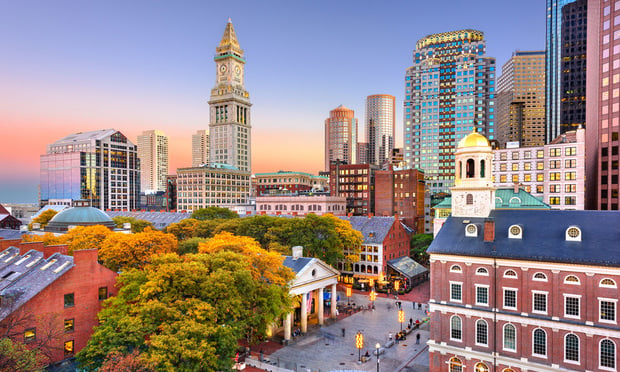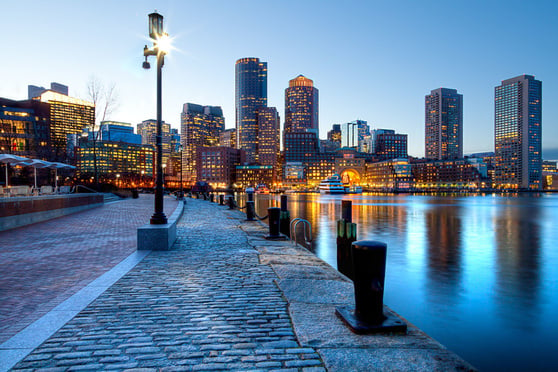BOSTON—Mayor Martin J. Walsh released the final draft of his ambitious “Imagine Boston 2030' plan that provides a framework for future development, implementing necessary climate change initiatives and enhancing the city's quality of life.
Under the city's timeline, the release of the last draft of the Imagine Boston 2030 plan last Thursday, which is based according to city officials on the input of more than 14,000 residents from every city neighborhood, will kick off a month-long comment period before the final plan is released this summer.
“Imagine Boston 2030 takes a holistic approach to our planning efforts to ensure that our city grows in an equitable and sustainable way,” says Mayor Walsh. “I am proud to share this next iteration of the plan, which incorporates the feedback from thousands of residents who helped refine our shared vision for the future of Boston. From Suffolk Downs to Readville, Franklin Park to Sullivan Square, we're shaping the city's future together—every corner, every neighborhood—and I look forward to seeing how Boston will grow and thrive.”
Part of the plan includes Mayor Walsh's ambitious plan to add 53,000 new housing units by the year 2030. The plan identifies six transit-accessible areas at the edges of existing city neighborhoods where it could guide new housing and commercial growth, supported by public realm and climate investments. Those six areas are: Sullivan Square, Newmarket and Widett Circle, Fort Point Channel, Suffolk Downs, Readville and Beacon Yards.
Another area of the city of particular focus in the Imagine 2030 report is the Fairmount Corridor. The plan calls for “expanded access to opportunity” and the reduction of disparities in neighborhoods along the Fairmount Corridor through investments in transportation, neighborhood vibrancy and education.
The plan also calls for the enhancement of the Boston waterfront “by activating open spaces, connecting neighborhoods to the waterfront, creating sustainable funding models, and investing in proactive climate planning and infrastructure.”
The voluminous Imagine Boston 2030 covers a host of major initiatives, including improving education in the city. Part of the plan's vision includes “BuildBPS,” which calls for investing $1 billion in upgrading Boston's school buildings over the next 10 years.
BOSTON—Mayor Martin J. Walsh released the final draft of his ambitious “Imagine Boston 2030' plan that provides a framework for future development, implementing necessary climate change initiatives and enhancing the city's quality of life.
Under the city's timeline, the release of the last draft of the Imagine Boston 2030 plan last Thursday, which is based according to city officials on the input of more than 14,000 residents from every city neighborhood, will kick off a month-long comment period before the final plan is released this summer.
“Imagine Boston 2030 takes a holistic approach to our planning efforts to ensure that our city grows in an equitable and sustainable way,” says Mayor Walsh. “I am proud to share this next iteration of the plan, which incorporates the feedback from thousands of residents who helped refine our shared vision for the future of Boston. From Suffolk Downs to Readville, Franklin Park to Sullivan Square, we're shaping the city's future together—every corner, every neighborhood—and I look forward to seeing how Boston will grow and thrive.”
Part of the plan includes Mayor Walsh's ambitious plan to add 53,000 new housing units by the year 2030. The plan identifies six transit-accessible areas at the edges of existing city neighborhoods where it could guide new housing and commercial growth, supported by public realm and climate investments. Those six areas are: Sullivan Square, Newmarket and Widett Circle, Fort Point Channel, Suffolk Downs, Readville and Beacon Yards.
Another area of the city of particular focus in the Imagine 2030 report is the Fairmount Corridor. The plan calls for “expanded access to opportunity” and the reduction of disparities in neighborhoods along the Fairmount Corridor through investments in transportation, neighborhood vibrancy and education.
The plan also calls for the enhancement of the Boston waterfront “by activating open spaces, connecting neighborhoods to the waterfront, creating sustainable funding models, and investing in proactive climate planning and infrastructure.”
The voluminous Imagine Boston 2030 covers a host of major initiatives, including improving education in the city. Part of the plan's vision includes “BuildBPS,” which calls for investing $1 billion in upgrading Boston's school buildings over the next 10 years.
Want to continue reading?
Become a Free ALM Digital Reader.
Once you are an ALM Digital Member, you’ll receive:
- Breaking commercial real estate news and analysis, on-site and via our newsletters and custom alerts
- Educational webcasts, white papers, and ebooks from industry thought leaders
- Critical coverage of the property casualty insurance and financial advisory markets on our other ALM sites, PropertyCasualty360 and ThinkAdvisor
Already have an account? Sign In Now
*May exclude premium content© 2024 ALM Global, LLC, All Rights Reserved. Request academic re-use from www.copyright.com. All other uses, submit a request to [email protected]. For more information visit Asset & Logo Licensing.









